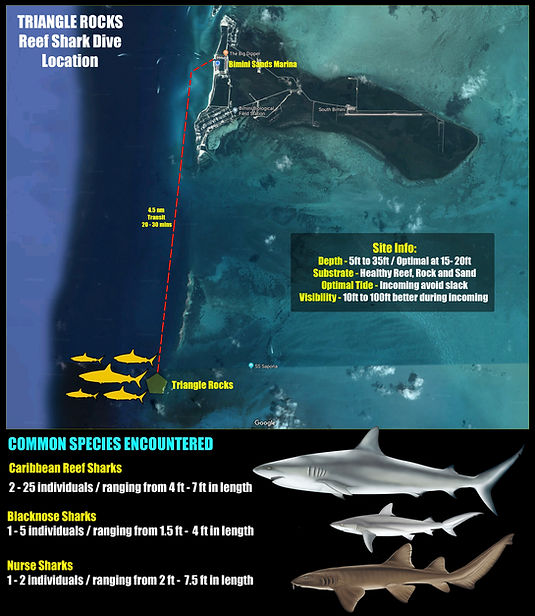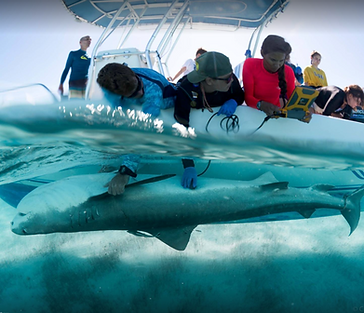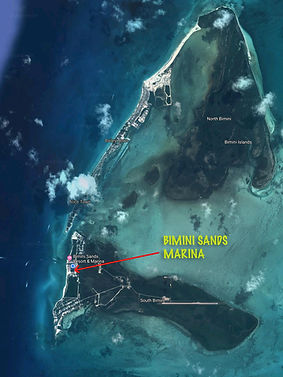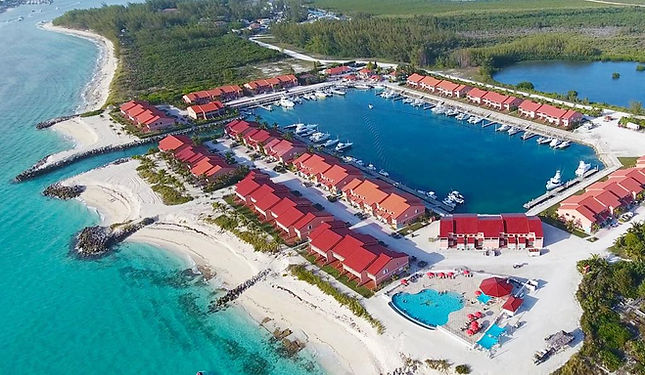PROJECT EPISILON
SHARKFEST NAT GEO
BACKGROUND - Duncan Brake / Oceanicallstar@gmail.com / US Cell: +1 603 630 4131
I am a marine Biologist and DP that travels throughout the globe, filming
The Lab
Lair of the Tiger
The Thing
At a remote research station in the Arctic, Dr Steve Kessel and his team, brave the elements risking their lives in search of a monster; the longest living vertebrate to man ....... The Greenland Shark.
Playing on the intro feel of the 1982 film " The Thing' Starring Kurt Russel - sets the isolation, danger not just from the Polar Bears (Scientists carry riffles).. but also the extreme elements....... Due to remote location scientists are limited to small rubber boats and seaplanes to get around but are essentially alone !!! Very iconic imagery...... Dr Steve Kessel is a cheeky Brit with a lot of personality and is currently the director of Shed Aquarium. Low light sensitivity max depth fin fans to be deployed to observe behavior in an unknown world.
Jurassic Shark
The Great White may take place at the top of the food chain now, but how would the ruler of our oceans stand up against the ancient Megalodon or Helicoprion ??? Join Dr Greg Skomal and his team of scientists as they bring back to life some of the oceans most fearsome extinct predators and examine what niche they would fill in the food chain if they were alive today!!!
Top trump style show with a Deadly 60 feel which pits real sharks against annimated renditions of extinct sharks. Talent (changeable) and lead examine and discuss, the fight between the epic predators - OTS comfortable talent needed for 2 shots that can be graphically overlaid.
Legacy
Canadian Film maker Rob Stewart travelled the world filming sharks and exposing the truth behind Shark Finning in Sharkwater and the dark secrets that the cosmetic industry hides in Sharkwater Extinction but ultimately died whilst filming the story. Discover the people who Rob met along the way and the ground breaking conservation and science that is being undertaken from the inspiration of his films.
This really is a Memoranium feel good piece, that acknowledges the work Rob did. Ultimately the audience are shark fans and the majority of people watching Shark Fest, Shark Week, Shark movies and shows will be aware of Sharkwater and Robs work and maybe even inspired them to care and learn more about sharks.
FILMING LOCATIONS
GREAT HAMMERHEADS - GREAT HAMMERHEADQUARTERS
Working with Neal Watson Bimini Scuba Center on the Bimini Blue
.jpg)
The area highlighted by the letter B indicates the location of a site known as HAMMERHEADQUARTERS or alternatively called THE GRATE. The site is in approximately 15-20 ft of water so there is very little limitations imposed with dive time as you are diving around your safety stop, one dive tank can last you up to 2 hours. The visibility can be 10ft to 100ft depending on weather conditions. The site is usually in the lee of the island from the most common wind directions found that time of year, but conditions can vary. Occasionally large swell from the Gulf Stream can come in creating surge on the bottom. Most commonly operators will move to a deeper are a at around 30 - 40 ft to combat the surge on the bottom.
This a a conditioned feed site where the hammerheads follow the scent trail up current and get hand fed by a dive master. Talent can be cheated down current, so baiting does not appear in shot. During tide cycles when the current slows at slack hammer direction becomes more erratic and less predictable.
As well as Hammerheads you are likely to encounter Nurse sharks in close proximity as well as Bull sharks at a distance. There is also chance that the occasional tiger shark shows up. As you can see from the video opposite the sharks will be in close proximity to the talent and careful planning will have to be made for the cable logistics for the live feed.
Depending on conditions it is common to get anything from 1 to 8 Great Hammerheads, 10 - 40 nurse sharks, 1- 5 Bull sharks and 1 Tiger shark. The substrate is white sand with the possibility of some small wreckage in close proximity.
SOUTHERN STINGRAYS - HONEYMOON HARBOR - GUN CAY
Working With Neal Watson on the Bimini Blue - Possible small support boat needed
.jpg)
The site for Southern Sting Rays is called Honey Moon Harbor (Gun Cay). It is approximately 8 nm from the South of Bimini, and from the Bimini Sands Marina will take approximately 30 - 45 minutes. The site can be operated from knee depth water up to 15ft depth and the sting rays can be attracted over white sand OR lush sea grass beds. The visibility can depend on the tide and weather with the best visibility actioning around the last 3 hours of the incoming and the last three hours of the outgoing tides.
The interaction from the sting rays will be greater around times of flow and will drop off during slack tide. As well as Sting Rays it is common to see Juvenile and sub adult Nurse sharks as well as Blacknose sharks and the occasional Black Tip shark. This is again a baited site but Sting rays will also turn up with the noise of the boat and presence of people. This site can be accessed by any tourist with a boat so avoid weekends and possibly have Bimini Tourism rep join on live tx.
CARIBBEAN REEF SHARKS - TRIANGLE ROCKS
Working With Neal Watson on the Bimini Blue

SPOTTED & BOTTLENOSE DOLPHINS - NORTH WEST BIMINI
Working With Al and Kelly Sweeting on Renegade and possibly Neal Watson on the Bimini Blue
Vital Heim - PhD Candidate - Hammerheads & Stingrays
Vital is one of the current lead PhD Candidates at the Sharklab. Specializing in Great Hammerheads and Sting Rays. He is a marine biologist interested in the behaviour, migration and physiology of sharks and how these factors influence their role in ecosystem functioning.

Summary of Past and Present Work:
Masters of Science (MSc, graduated In May 2018)
For his Masters of Science Vital investigated how dive tourism and the daily provisioning of great hammerhead sharks, Sphyrna mokarran, impacts their behaviour and small-scale movements in Bimini, the Bahamas. Visual identification, dive surveys, acoustic monitoring and dynamic Brownian Bridge Movement Models (dBBMM) were used to characterise the individual behaviour of great hammerhead sharks at a dive site and estimate how the daily feeding influences their local space-use.
PhD
By using satellite telemetry and fishery data Vital is identifying the seasonal distributions and relative densities of scalloped, Sphyrna lewini, and great hammerhead sharks, S.mokarran, and quantify their horizontal movement patterns to assess the efficacy of hypothetical time-area closures for a better conservation management. Furthermore, Vital aims to characterise the potential predator-prey interaction between S. mokarran and the Southern stingray, Hypanus americanus, to understand potential ecosystem implications resulting from the loss of top-down regulation of a mesopredator population.
Contact Info: Cell +41 79 732 05 57 (On WhatsApp ONLY) Email: vital.heim@bluewin.ch
NOTE: Vital is based at the Bimini Sharklab. He is on Time zone EST. He spends most of his time in the field so scheduling a call will have to be based around research and bad weather.
Matt is a Tiger Shark researcher and is investigating the movements of the Tigers and why they frequent Bimini with particular emphasis on the presence of juveniles and large pregnant females being indicative that the waters around Bimini may be a pupping ground for Tigers. He has experience being filmed and on camera.

Matt Smukall - PhD Candidate - Tiger Sharks
Matt is currently based up in Orlando, Florida whilst he finishes off his PhD, still making visits to the Sharklab to continue his projects and deploy more tags on his Tiger sharks. He is aiming to try and deploy more satellite tags next year. If you are requiring him to be in Bimini outside of when he is scheduled you will have to cover his travel costs to the Island also if you were wanting to have Talent tag a shark and use the data in the show you will have to cover the costs of the tag and the satellite time. Examples of these Tiger Shark tracks can be found in the Shark Research Satellite Tags section below:
Contact Info: US Cell +1 407 493-4866 (On WhatsApp) Email: mattsmukall@gmail.com
NOTE: Do Not Contact Matt before Monday the 19th of November as he is currently sitting his PhD Examinations this week. He has been briefed and is happy to accept calls and discuss his research after the 19th. He is on Time zone EST.
Clemency White PhD Candidate - United Kingdom - Lemon Sharks
Clem's PhD project focuses on her interest in elasmobranch spatial and sensory ecology and considers the role of different sensory modalities in orientation and navigation. She also considering how navigation is affected by anthropogenic disturbances and how we can mitigate this, in order to inform sound conservation management that can be replicated in other systems.

Summary of Past and Present Work:
MSc (September 2018)
For Clem's Masters degree, she collated movement information on the lemon shark Negaprion brevirostris collected from passive and active tracking efforts conducted by the Bimini Sharklab between 1992 and 2018. Combining GPS coordinates, timestamps, sex and size information using dynamic Brownian Bridge Movement Modelling (dBBMM) Clem was able to detail the drivers of space use by N. brevirostris over a 26 year time period. This provided valuable information about how this population differs in activity space size based on sex, life stage and amount of industrial development.
PhD (October 2018 - present)
Clem's PhD project aims to distinguish the specific sensory and spatial ecology of Bimini’s population of N. brevirostris and the precise physiology used to navigate, with a particular focus on the proposed role of electroreception, hearing and vision. In relevant cases, Clem will outline how these are influenced by anthropogenic disturbance. These findings will be used to discuss the effectiveness on current protection efforts and how the local ecosystem should be managed for the best interest of N. brevirostris.
Contact Info: UK Cell +44 7894 576 965 (Whats App Only) Email: clemencywhite27@gmail.com
Shark Cinema Science
Satellite Tagging Sharks

Satellite Spot Tags are one of the most valuable tools in tracking long term migrations and movement patterns of sharks that swim at the surface from time to time. The Shark Lab is getting very valuable data from Tiger Sharks and Hammerheads on their projects. The Image opposite actually shows the track of a large female tiger shark that was tagged in February 2019. Showing these tracks is also a great argument for the need of more protection for sharks in the waters as they migrate through shark sanctuaries like the Bahamas into unprotected waters like Haiti where they are caught and killed for their fins and meat.
Ultra Sound Research on Elasmobranchs

Below a sharklab researcher glides the ultrasound probe over the belly of a 3.1m female tiger shark. Normally to find out if a shark is pregnant, you need to wait for blood samples to be analyzed which can take some time. With this portable and easy to use ultrasound from E.I. Medical Imaging, we can determine if a shark is near-term pregnant immediately on site! The video below shows a tiger shark foetus. The device has been treated to be water proofed at shallow depths and can be deployed wet off the side of a boat plus one of the units can be dove with (see image with hammerhead).

PRODUCTION CREW ACCOMMODATION
Bimini Sands Resort and Residences - South Bimini

